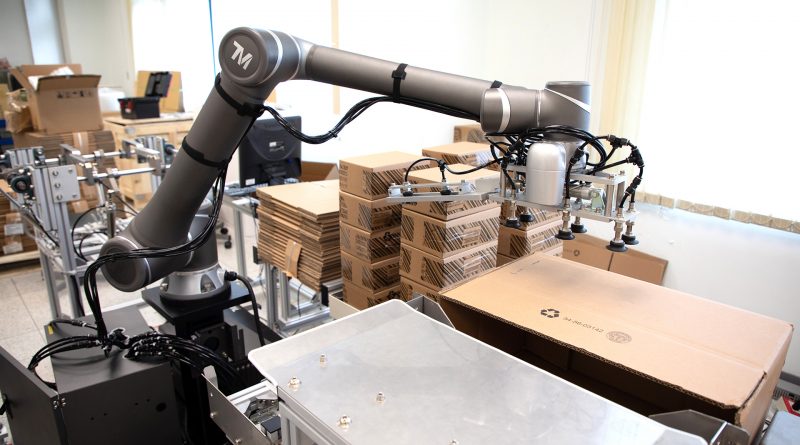Collaborative robotics after the emergency
What will be the future of collaborative robots when the emergency caused by the new coronavirus is over? Omron is convinced that they will help companies to improve organisation and benefit manufacturers, for example by allowing more flexible production with production lines that can be easily reconfigured to meet changing needs.
Even before this Covid-19 crisis, statistics showed that countries such as the UK and Germany are likely to experience serious labour shortages over the coming decade, especially in relation to technical specialists. At the same time, product lifecycles are becoming shorter. Despite this, small and medium-sized enterprises (SMEs) might be reluctant to invest in additional automation. However, collaborative robots are easy to set up and offer a quick and cost-effective solution. They can increase the flexibility, quality and speed of production and enable companies to respond rapidly to changing market conditions. Omron’s TM series of cobots are a good example of this versatility.
Versatility and simplicity
The diverse tasks they can handle vary from simple pick-and-place applications for parts handling, sorting and palletizing, through to machine assembly, order picking, packaging and testing. They can help to apply adhesive and sealants, assemble or disassemble parts, measure, test, check and take over screwing operations. This results in significant benefits for the employees, who no longer have to carry out monotonous, physically demanding or even dangerous work, but will receive support with precision work and can concentrate on their core abilities.
Omron’s TM series of cobots illustrate how versatile and straightforward cobots are today. The different versions are suitable for practically any environment, such as the automotive, semiconductor, food, packaging, and cosmetics sectors. Due to the flowchart-based programming, an intuitive HMI user interface and simple, hand-guided teaching functions, almost no previous knowledge of programming is required. Like a PowerPoint presentation, the user can assemble complete function blocks and fill the predefined attributes with the desired parameters. The cobots have options that include an integrated camera, vision – and a lighting system which enable them to precisely handle and trace items.
Work wherever it is needed
Many core functions (such as pattern, barcode, and colour recognition) enable detection, inspection, measurement, and sorting applications to be implemented easily and, if necessary, adapted to other requirements. With the help of Omron’s Landmark positioning recognition facility, the cobot knows where it is and can be aligned with another machine, for example, without much effort or recalibration. It can even move autonomously and work wherever it is needed, because cobots can be combined with Omron’s LD series of mobile robots.
Additional components can be easily used by the cobots via plug-and-play system. Omron has set up a partner network that offers a range of suitable components. The company’s automation experts also provide support with any queries about the use of cobots. This starts with the analysis of the production task and the environment; the selection of the appropriate cobots and grippers or additional components; and also includes risk analysis and assessment, commissioning, training and technical support.

